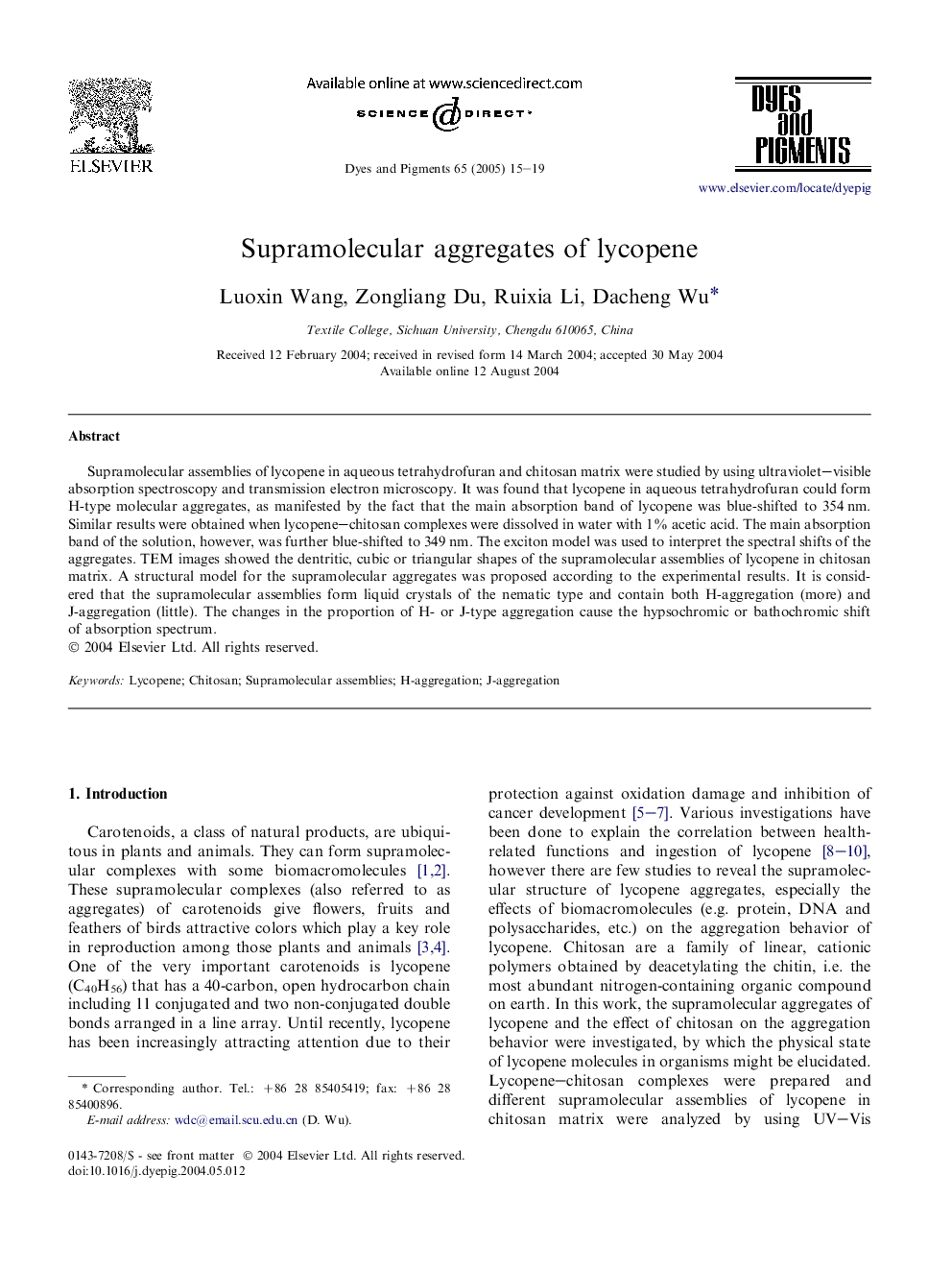| Article ID | Journal | Published Year | Pages | File Type |
|---|---|---|---|---|
| 10266454 | Dyes and Pigments | 2005 | 5 Pages |
Abstract
Supramolecular assemblies of lycopene in aqueous tetrahydrofuran and chitosan matrix were studied by using ultraviolet-visible absorption spectroscopy and transmission electron microscopy. It was found that lycopene in aqueous tetrahydrofuran could form H-type molecular aggregates, as manifested by the fact that the main absorption band of lycopene was blue-shifted to 354Â nm. Similar results were obtained when lycopene-chitosan complexes were dissolved in water with 1% acetic acid. The main absorption band of the solution, however, was further blue-shifted to 349Â nm. The exciton model was used to interpret the spectral shifts of the aggregates. TEM images showed the dentritic, cubic or triangular shapes of the supramolecular assemblies of lycopene in chitosan matrix. A structural model for the supramolecular aggregates was proposed according to the experimental results. It is considered that the supramolecular assemblies form liquid crystals of the nematic type and contain both H-aggregation (more) and J-aggregation (little). The changes in the proportion of H- or J-type aggregation cause the hypsochromic or bathochromic shift of absorption spectrum.
Related Topics
Physical Sciences and Engineering
Chemical Engineering
Chemical Engineering (General)
Authors
Luoxin Wang, Zongliang Du, Ruixia Li, Dacheng Wu,
